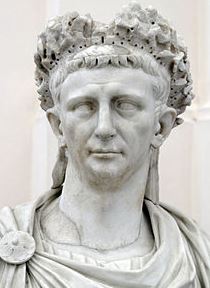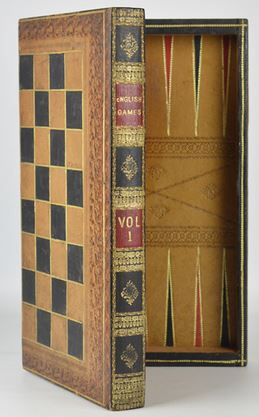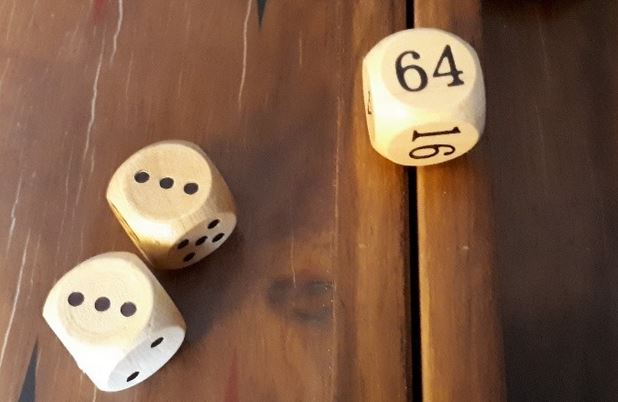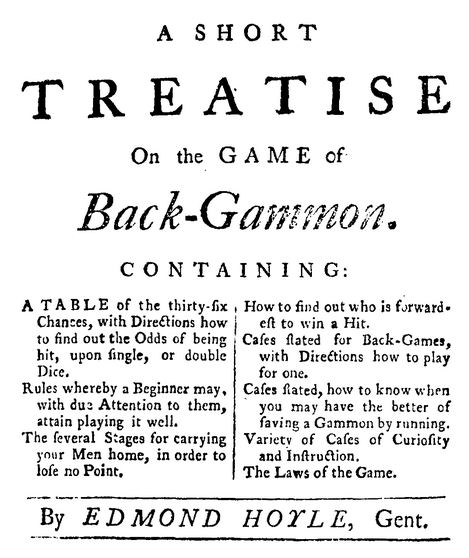Last updated on July 13, 2024
In this post, Deluxe Backgammon will take a look at some of the trivia surrounding the game. It might be useful to learn some of this material for your next pub quiz night. The next time you are enjoying your luxury backgammon set, remember that there is quite a bit of history surrounding this wonderful game.
FIBS
In 1993 FIBS (First Internet Backgammon Server) was created by Andreas Schneider and hosted on an academic server in Sweden. FIBS allowed as many as 100 players to compete at any one time. There was also the ability to save matches and compare playing strengths via a rating system. FIBS is still in use today and was a forerunner in online gaming.

Nard
In Asia, the game of Nard has been played for over a thousand years. Nard is a board game for two players in which the playing pieces are moved according to rolls of the dice. It is similar to backgammon in that it uses the same board, but it has different initial positions and rules. The board is considered to be symbolic. Each side of the board has twelve points representing the months of the year. The twenty-four points serve as the hours in a day. The thirty checkers represent the days of the month. The contrasting colours of the checkers represent day and night.
Tabula
Apparently, the Roman Emperor Claudius was a keen player of tabula, a forerunner to the modern backgammon game. Around 50 AD Claudius wrote a history of the game of tabula. However, this document has not survived. He was such a keen player that he had a tabula board built into his chariot so that he could play when he travelled.
Numbers
Numbers are important in backgammon, therefore it is important to understand some key concepts. To win the game from the starting position you need to roll at least 167 pips on the dice. However, in reality, you will roll many more than this figure to get all of your pieces off the board. The average total roll for two dice is seven. However, in backgammon, this figure is 8.16 because the doubles are effectively used twice. Finally, a double is likely to occur, on average one in every six rolls. You can read more about numbers and backgammon on our Probability page or in our Playing Guides.
Ancient history
Backgammon originated in ancient Mesopotamia, modern-day Iraq, over five thousand years ago. It is recognised as the world’s oldest surviving board game. Even after that length of time, the game of backgammon is still popular today.
Backgammon was played in ancient Roman times, where it was called Tabula. The game must have been popular because it was commonly depicted in frescoes.
The renowned Greek philosopher Plato mentioned the game of backgammon in his writings in the 4th century BC.
Backgammon banned
Backgammon has been banned a number of times throughout history. The French banned the game during the 13th century because of religious beliefs that prohibited gambling. Backgammon was also banned in 16th century England, again because of its association with gambling. Cardinal Wolsey demanded that all backgammon boards be burnt because he considered the game “the devil’s folly”. However, English craftsmen quickly came up with the idea of folding the boards in half, in the form of a book, to disguise them.
Modern backgammon
Prince Alexis Obolensky, the founder of the International Backgammon Association, was known as ‘The Father of Modern Backgammon’. In 1964 he organised the first major international backgammon tournament held in the Bahamas. The tournament was a huge success in attracting celebrities and the press. As a result of this triumph, backgammon surged in popularity throughout the sixties and seventies.
Doubling cube
The doubling cube, which is an essential part of the modern game, was only introduced in the 1920s. It was invented by an unknown backgammon player in New York. As a result, it had an immediate appeal to those with an interest in gambling. The doubling cube revolutionised the game and led to a surge in popularity. Soon after its introduction, the doubling cube spread throughout the Western world and remains popular to this day.
The name backgammon
In English, the name ‘backgammon’ is thought to have originated from the words “back” and the Middle English “gamen”, which means “game” or “play”. Therefore the name refers to the back game strategy. The earliest mention in the Oxford Dictionary was in 1650. In French, backgammon was called Le Trictrac, a name thought to have resulted from the sound of the dice. In Spain, backgammon was called “Tablas Reales”, which means “Royal Tables”. This was because the game was enjoyed in aristocratic circles.
Rules
Edmond Hoyle was an English writer best known for his works on the rules and playing styles of card games, such as Whist. The phrase “according to Hoyle” came into the English language as a result of his noted authority on the subject of games. In 1743 Hoyle published the first official set of rules for backgammon in his work A Short Treatise on the Game of Backgammon.
The phrase “turn the tables”
According to most English dictionaries, if you “turn the tables” on someone, it is generally understood that you have reversed the fortunes in your favour to some extent. In other words, to reverse your position relative to someone else, especially by turning a position of disadvantage into one of advantage. This term actually originates from board games, such as backgammon.
There is a class of board games referred to as “tables”, which includes backgammon and generally includes games played on a board with dice. If the game wasn’t going in your favour, you would have to “turn” them, metaphorically speaking, if you wanted to win. Obviously, the rules don’t allow you to physically turn the table and reverse your fortunes, but the luck of the dice certainly does!






I stumbled across this post after reading a number of your backgammon playing guides (excellent material!) Very interesting, I run a local pub quiz, I’ll add a few of these interesting facts into my upcoming events. Keep those backgammon playing guides coming, they have really helped improve my game.